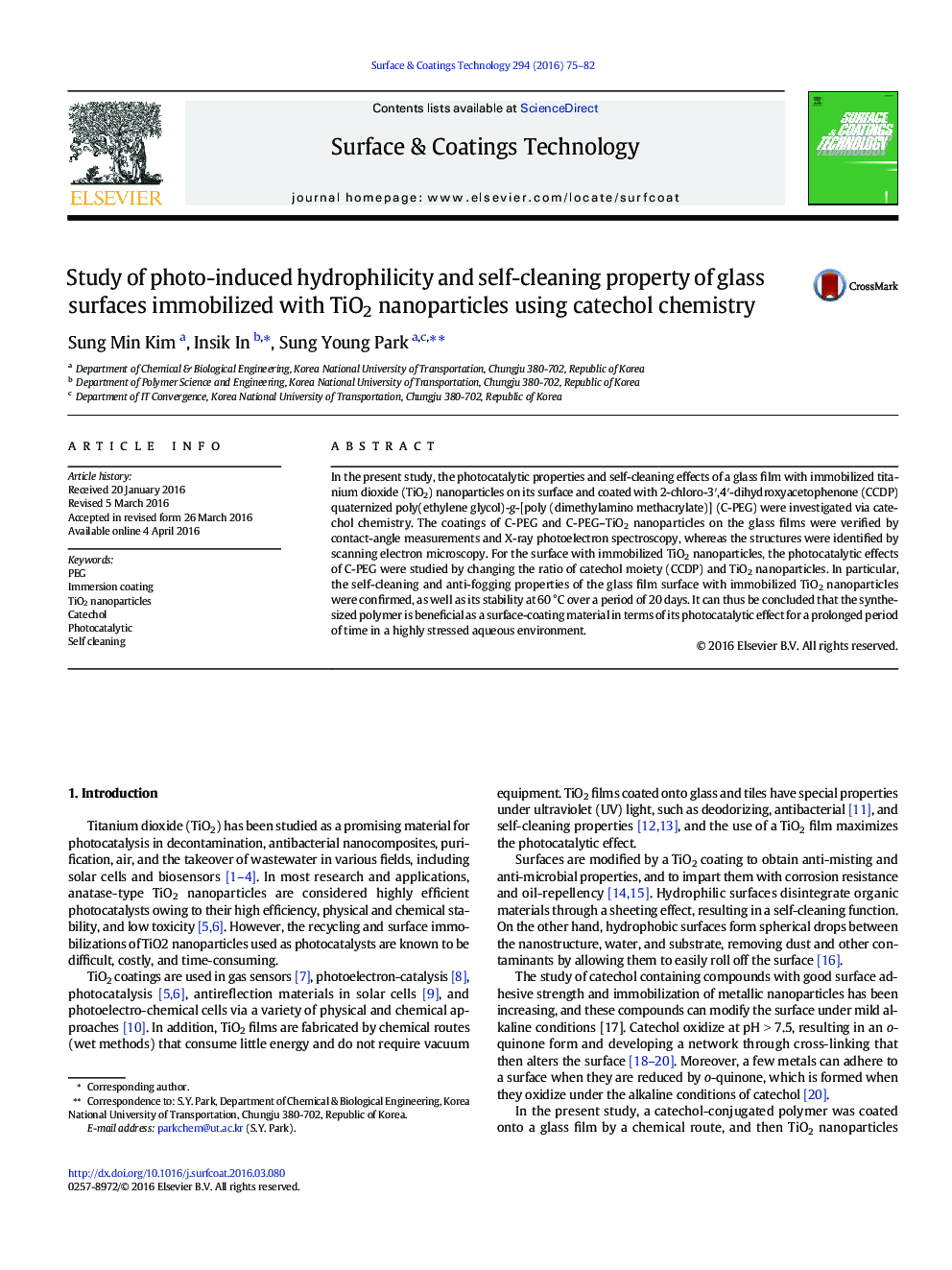| Article ID | Journal | Published Year | Pages | File Type |
|---|---|---|---|---|
| 1656413 | Surface and Coatings Technology | 2016 | 8 Pages |
•Water-resistant and surface-coatable polymer with TiO2 nanoparticles on a glass surface for photocatalytic and self-cleaning.•The polymer/TiO2 NPs for photocatalytic, and self-cleaning performance will overcome the currently available coating materials.•The self-cleaning and anti-fogging properties were confirmed over a period of 20-days at 60°C aqueous solution.
In the present study, the photocatalytic properties and self-cleaning effects of a glass film with immobilized titanium dioxide (TiO2) nanoparticles on its surface and coated with 2-chloro-3′,4′-dihydroxyacetophenone (CCDP) quaternized poly(ethylene glycol)-g-[poly (dimethylamino methacrylate)] (C-PEG) were investigated via catechol chemistry. The coatings of C-PEG and C-PEG–TiO2 nanoparticles on the glass films were verified by contact-angle measurements and X-ray photoelectron spectroscopy, whereas the structures were identified by scanning electron microscopy. For the surface with immobilized TiO2 nanoparticles, the photocatalytic effects of C-PEG were studied by changing the ratio of catechol moiety (CCDP) and TiO2 nanoparticles. In particular, the self-cleaning and anti-fogging properties of the glass film surface with immobilized TiO2 nanoparticles were confirmed, as well as its stability at 60 °C over a period of 20 days. It can thus be concluded that the synthesized polymer is beneficial as a surface-coating material in terms of its photocatalytic effect for a prolonged period of time in a highly stressed aqueous environment.
